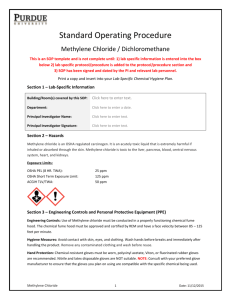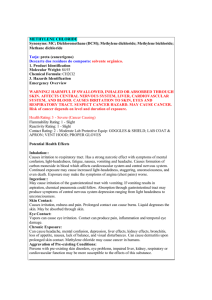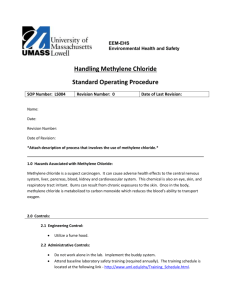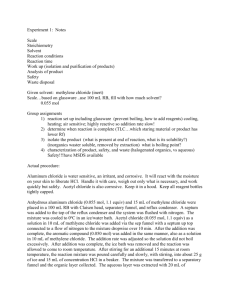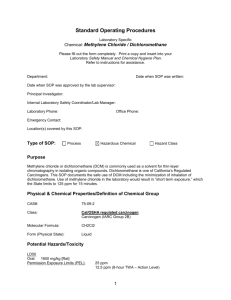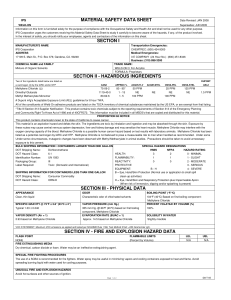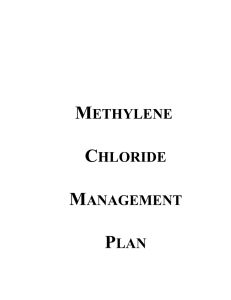Bath Tub Refinishing & Methylene Chloride
advertisement
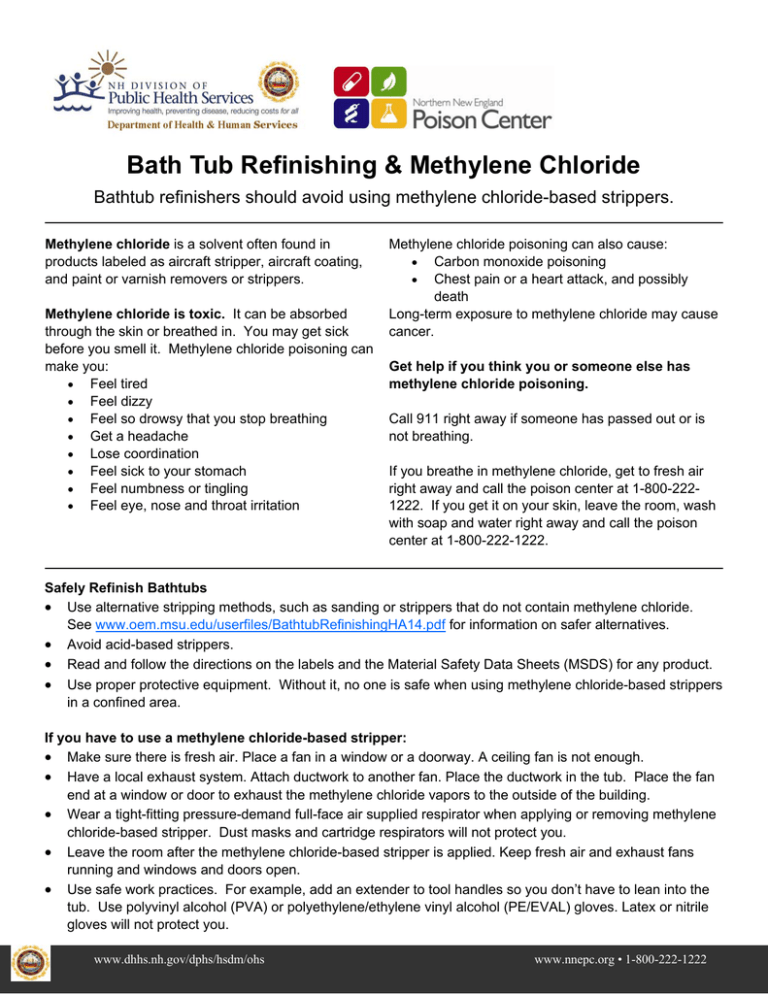
Bath Tub Refinishing & Methylene Chloride Bathtub refinishers should avoid using methylene chloride-based strippers. Methylene chloride is a solvent often found in products labeled as aircraft stripper, aircraft coating, and paint or varnish removers or strippers. Methylene chloride is toxic. It can be absorbed through the skin or breathed in. You may get sick before you smell it. Methylene chloride poisoning can make you: Feel tired Feel dizzy Feel so drowsy that you stop breathing Get a headache Lose coordination Feel sick to your stomach Feel numbness or tingling Feel eye, nose and throat irritation Methylene chloride poisoning can also cause: Carbon monoxide poisoning Chest pain or a heart attack, and possibly death Long-term exposure to methylene chloride may cause cancer. Get help if you think you or someone else has methylene chloride poisoning. Call 911 right away if someone has passed out or is not breathing. If you breathe in methylene chloride, get to fresh air right away and call the poison center at 1-800-2221222. If you get it on your skin, leave the room, wash with soap and water right away and call the poison center at 1-800-222-1222. Safely Refinish Bathtubs Use alternative stripping methods, such as sanding or strippers that do not contain methylene chloride. See www.oem.msu.edu/userfiles/BathtubRefinishingHA14.pdf for information on safer alternatives. Avoid acid-based strippers. Read and follow the directions on the labels and the Material Safety Data Sheets (MSDS) for any product. Use proper protective equipment. Without it, no one is safe when using methylene chloride-based strippers in a confined area. If you have to use a methylene chloride-based stripper: Make sure there is fresh air. Place a fan in a window or a doorway. A ceiling fan is not enough. Have a local exhaust system. Attach ductwork to another fan. Place the ductwork in the tub. Place the fan end at a window or door to exhaust the methylene chloride vapors to the outside of the building. Wear a tight-fitting pressure-demand full-face air supplied respirator when applying or removing methylene chloride-based stripper. Dust masks and cartridge respirators will not protect you. Leave the room after the methylene chloride-based stripper is applied. Keep fresh air and exhaust fans running and windows and doors open. Use safe work practices. For example, add an extender to tool handles so you don’t have to lean into the tub. Use polyvinyl alcohol (PVA) or polyethylene/ethylene vinyl alcohol (PE/EVAL) gloves. Latex or nitrile gloves will not protect you. www.dhhs.nh.gov/dphs/hsdm/ohs www.nnepc.org • 1-800-222-1222
